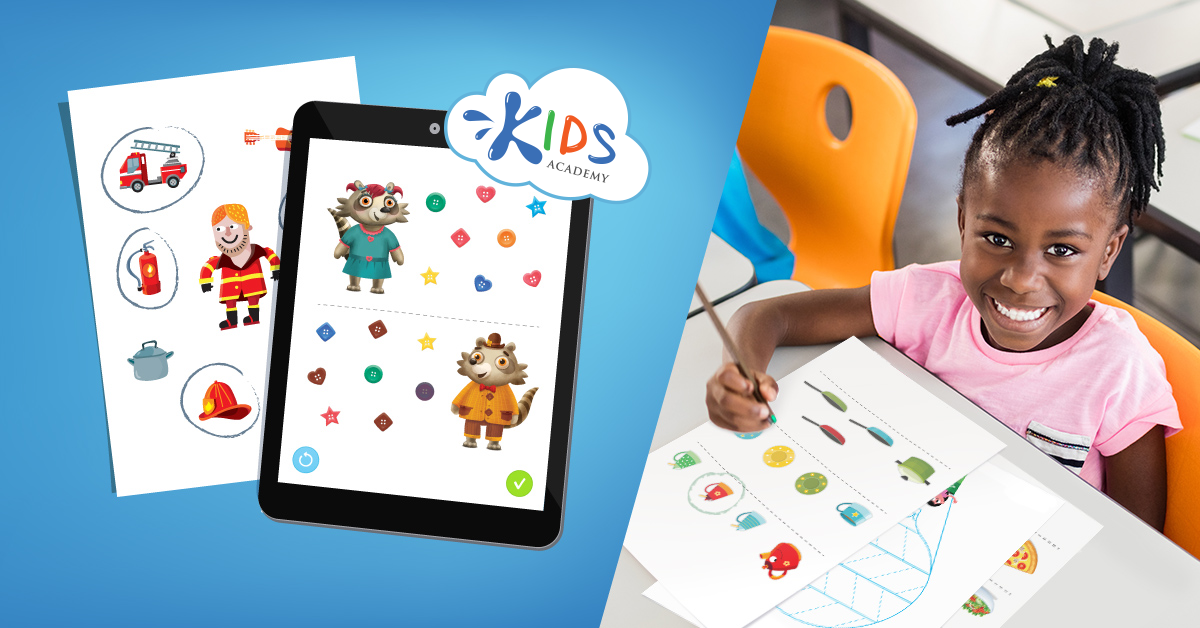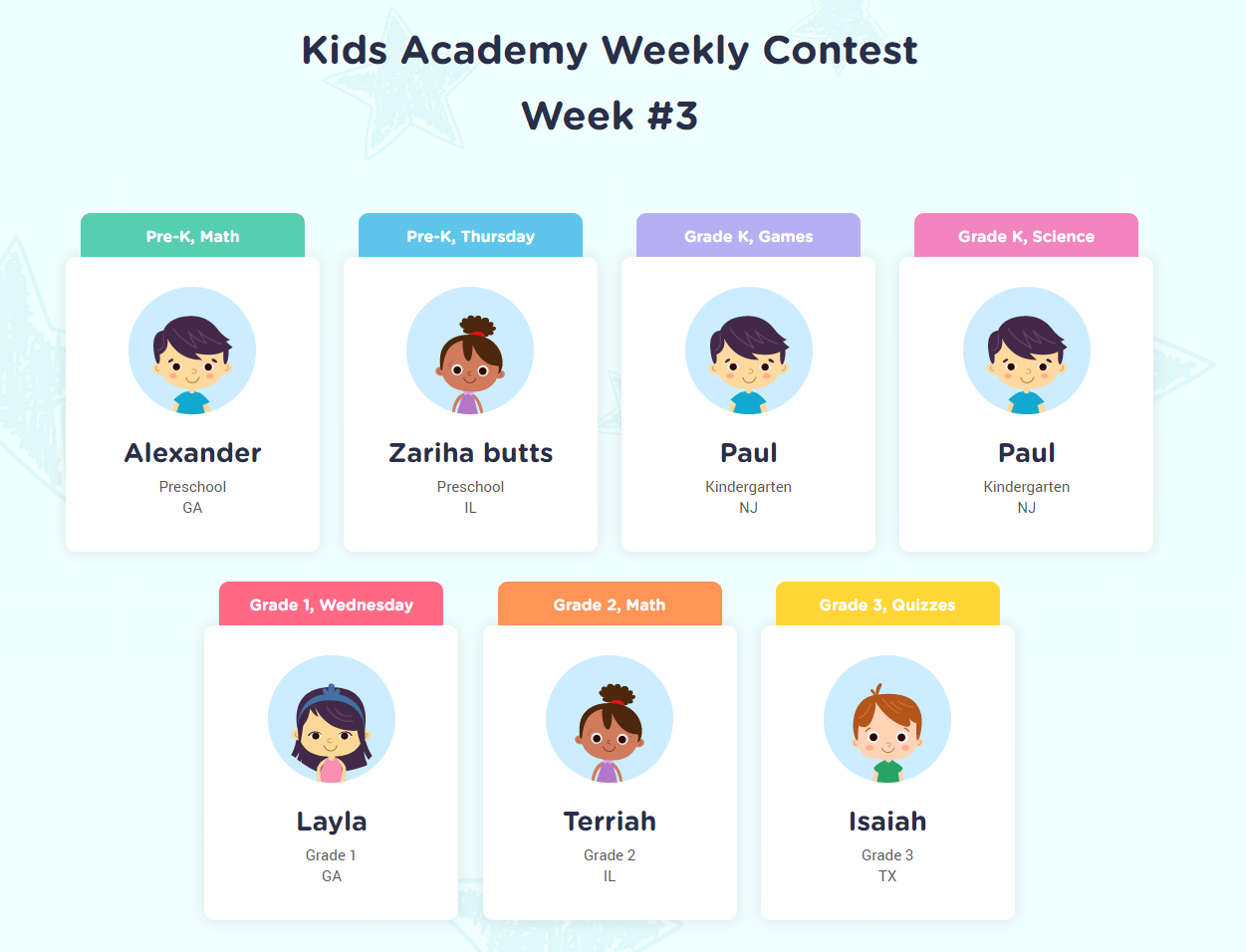Understanding forces Science Worksheets for Ages 6-8
6 filtered results
-
From - To
Explore the fascinating world of forces with our engaging "Understanding Forces Science Worksheets" designed specifically for children aged 6-8. These printable resources provide a fun and interactive way to introduce young learners to essential science concepts. Activities include identifying types of forces, exploring motion, and experimenting with gravity and friction. With vibrant illustrations and age-appropriate questions, these worksheets boost critical thinking skills and ignite curiosity. Perfect for classroom enrichment or at-home learning, our collections foster a hands-on approach to science. Empower your child to understand the forces at play in their everyday life while cultivating a love for learning!
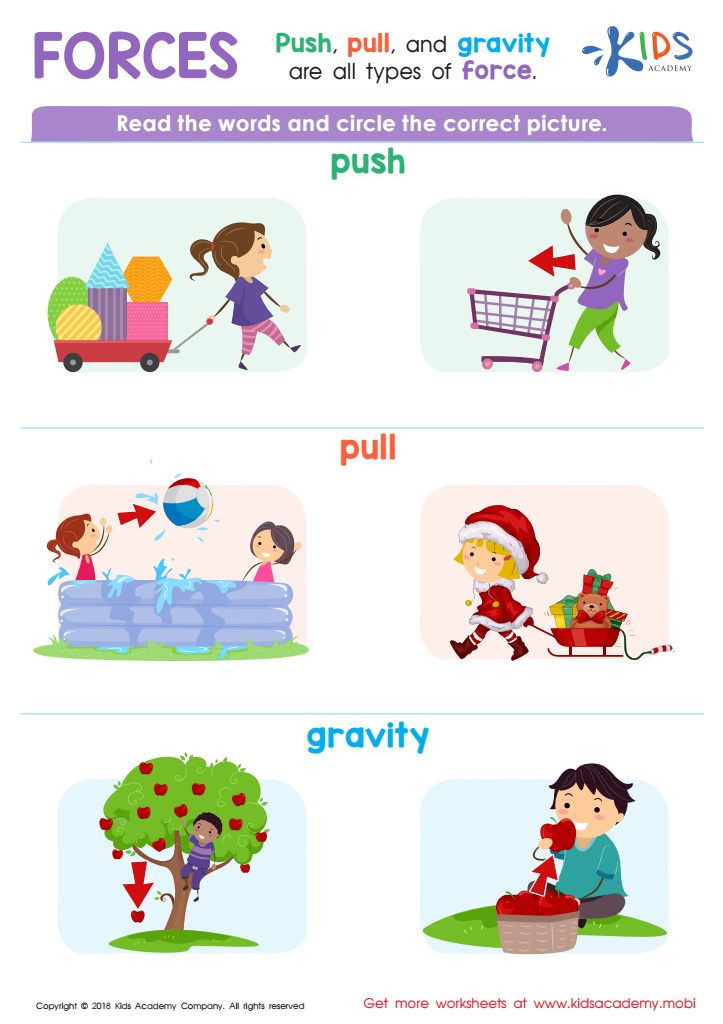

Forces Worksheet


Forces and Interactions Printable
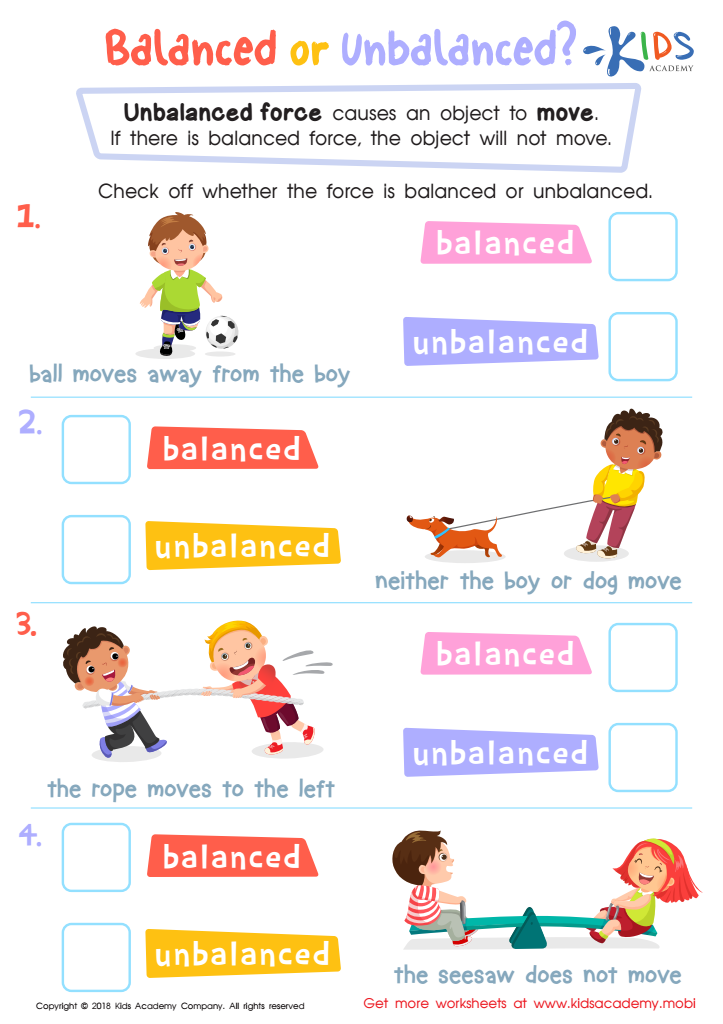

Balanced or Unbalanced Science Worksheet
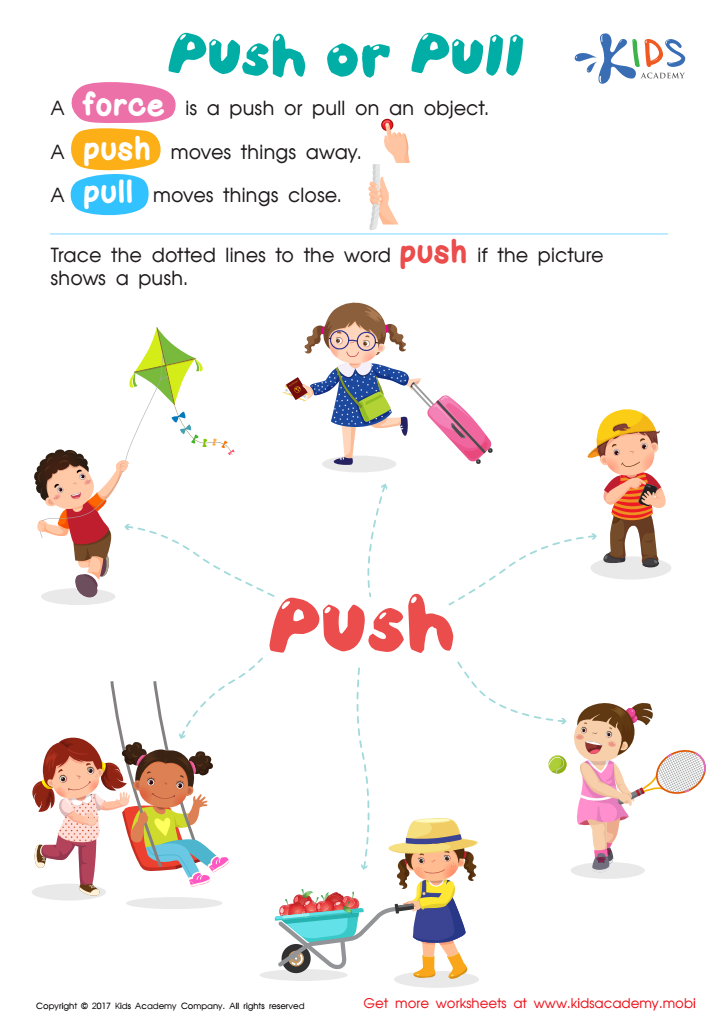

Push or Pull Worksheet
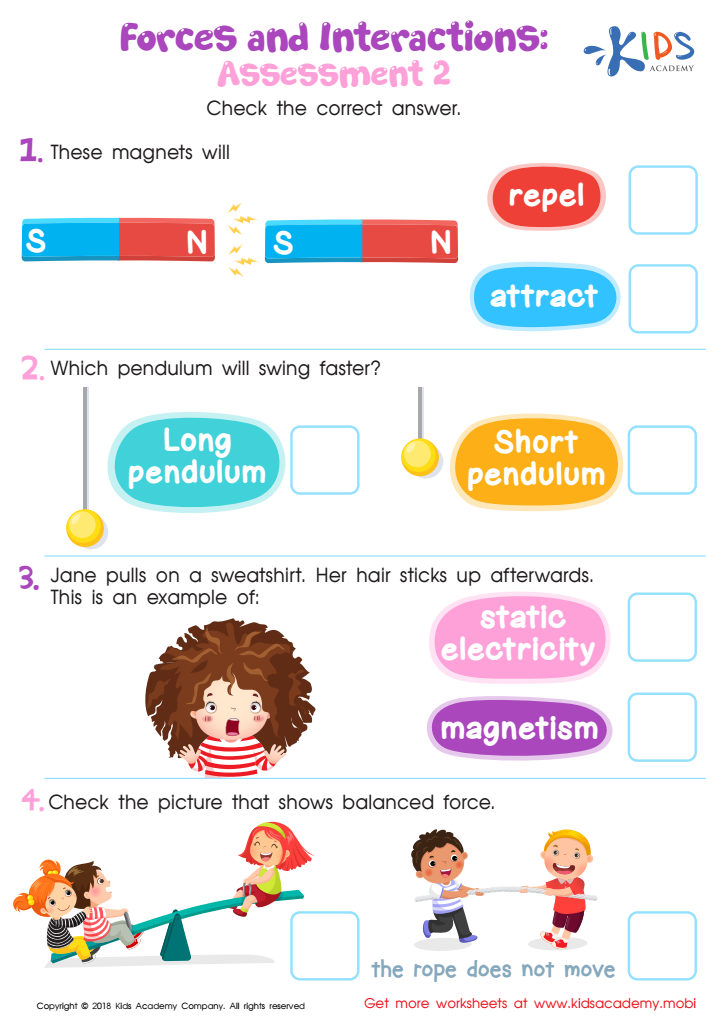

Forces and Interactions Worksheet For 3rd Grade
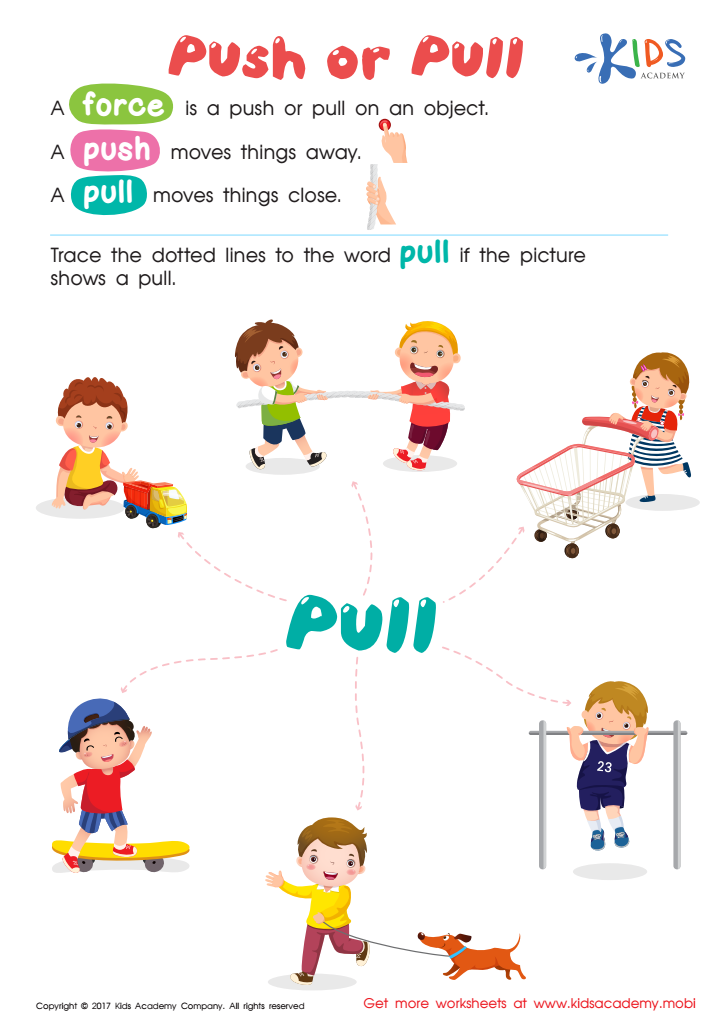

Pull or Push Worksheet
Understanding forces is essential for children aged 6 to 8, as it lays the foundational knowledge necessary for grasping basic scientific concepts. At this age, children are naturally curious about how things work. Learning about forces—such as push, pull, gravity, friction, and magnetism—helps them understand the world around them. It fosters critical thinking and problem-solving skills, as students experiment with objects to observe how different forces act upon them.
Additionally, integrating forces into science education captivates students' imaginations and allows them to engage in hands-on activities. These practical experiences promote collaboration and communication among peers, enhancing social skills alongside academic learning.
By emphasizing forces in learning, parents and teachers can nurture a child's interest in STEM (Science, Technology, Engineering, and Math) fields, possibly influencing future career paths. Furthermore, understanding forces can inform everyday life decisions, empowering children to apply scientific reasoning in their reasoning as they explore their environment.
Ultimately, fostering an understanding of forces enriches a child's educational experience, providing essential skills and knowledge that will benefit them across various subjects and life situations, making it a critical focus for both parents and educators.
 Assign to My Students
Assign to My Students





